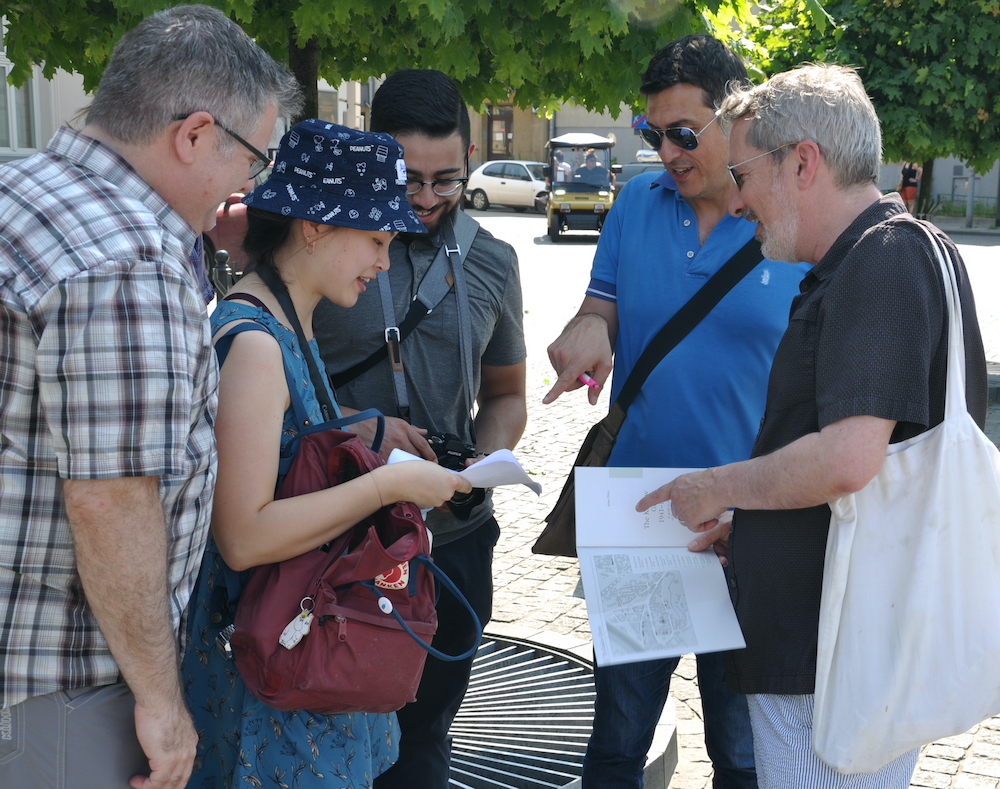About
Overview
The historical complexity of architecture’s relationship to politics in the modern era is perhaps nowhere better exemplified than in the prominent role building played in National Socialist Germany. Decades of scholars have attempted to parse the variable ideological associations ascribed to monumental state and Party building, while others have plumbed the depths of its administrative alignment with—and within—the highest levels of government authority. This included the destruction that manifested itself in the great conflagration of World War II as well as the devastating genocide of European Jewry.
Surprisingly though, relatively little attention has been paid to how this matrix of architectural interests, goals, and directed events proved most deadly and effective during the war and the German occupation of Eastern Europe. The dynamic between construction, as a practical and ideological weapon, and destruction, in its broadest sense including genocide, needs to be understood more critically and precisely. Our turn to Krakow under the Nazi occupation is an attempt to lay out what such a political history of architecture under occupation might look like. As is well known, Krakow became a key location within the National Socialist plan for military expansion and the implementation of genocide in Eastern Europe during World War II. Here Hans Frank and the General Government he led developed their policies of oppression and occupation by establishing a formidable German presence as well as claiming Krakow as “Germanized” again. Yet, while these policies and ideologies have been analyzed by scholars, little attention has been spent on how they were related to the built form of Krakow itself. Architecture participated in the technocratic process of occupation and warfare, and the competing and conflicting policies of ideology and political economy, genocide and productivity help to clarify architectural decisions.
This website documents digital art history work-in-progress that has been and is currently being developed to help explore this cultural and political problem.
Collaborators
Krakow Project Team
Project Team (2017-present)

- Alan Carrillo (Duke): Historical Research, Visualization
- Davide Contiero (Padua): Visualization
- Eve Duffy (Duke): Historical Research, Data Processing, Analysis
- Hannah Jacobs (Duke): Data Structure, Project Management, Visualization
- Paul Jaskot (Duke): Historical Research, Data Entry, Visualization, Analysis
- Sunny Gao (Duke): Web Design & Content Management
- Isabella Lafferty (Duke): Historical Research, Database Work
- Christine Liu (Duke): Visualization, Historical Research
- Antonio LoPiano (Duke): Data Processing, Visualization
- Cosimo Monteleone (Padua): Visualization, Analysis
- Mark Olson (Duke): Data Structure, Interoperability, Visualization
- Luca Rossi (Padua): Visualization
- Bryan Rusch (Duke): Data Entry, Visualization
- Sadie Sheridan (Duke): Photo analysis, Visualization, Historical Research
- Victoria Szabo (Duke): Historical Research, VR-AR development
- Tatjana Zimbelius-Klem (Duke): Historical Research, Digital Mapping
Holocaust Ghettos Historical GIS Project Team Leaders
Project Leader (PI): Anne Kelly Knowles (Maine)
Co-Pis: Paul Jaskot (Duke), Anika Walke (Washington University)